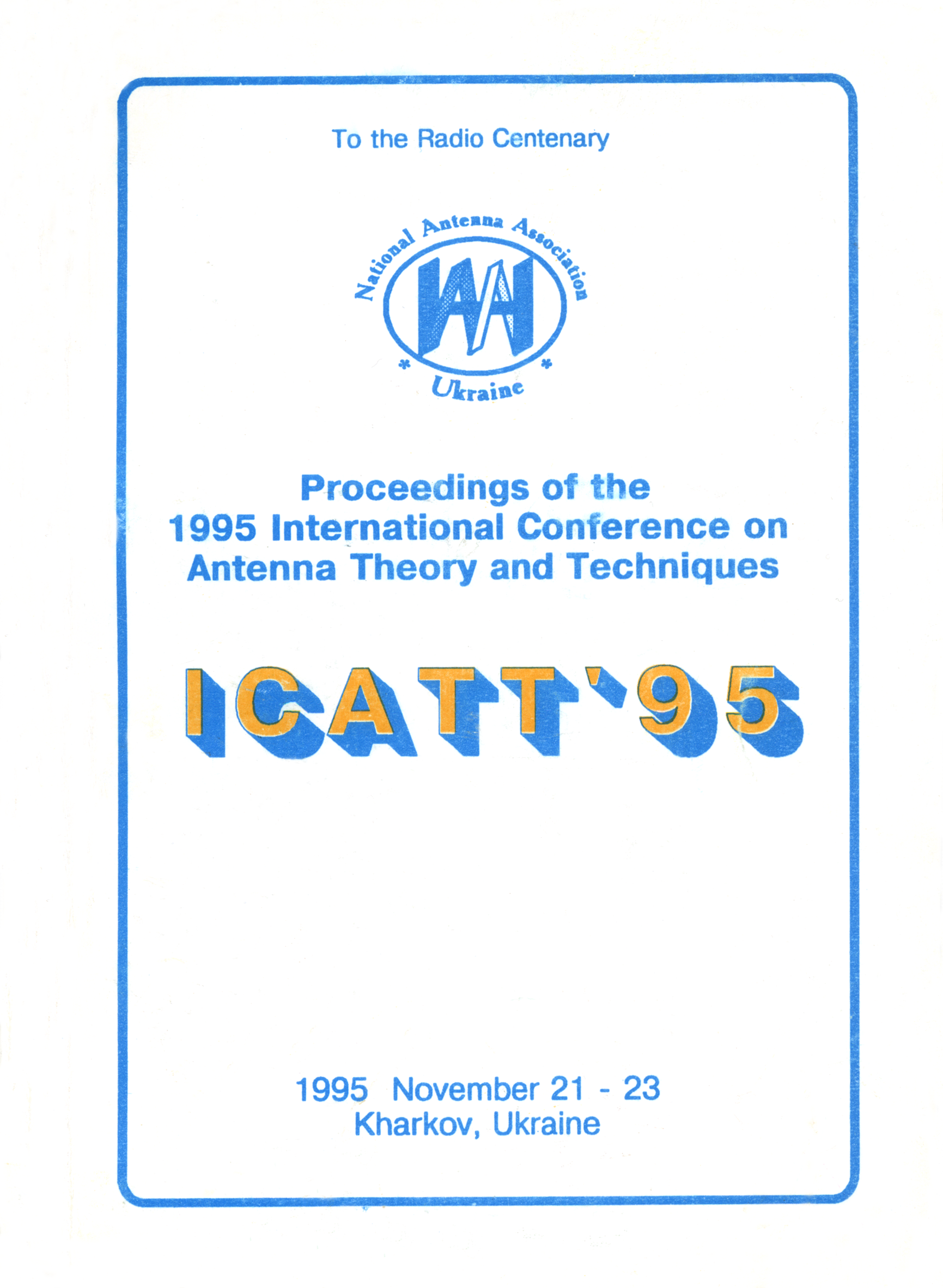The polarization method of antenna pattern forming in optically controlled antennas
DOI:
https://doi.org/10.1109/ICATT.1995.1234110Abstract
One of the most promising trends in the development of antenna technologies of the microwave and millimeter wave frequency range is the application of optically controlled antennas (OCA).
The advantages of OCA as compared to phased array antennas, in the millimeter wave band, and the limitations of traditional methods of the optical controling are discussed in the paper. Large phase errors in the apeture of OCA are known as one of the basic shortcomings of the conventional methods. The physical background and mathematical foundations of the polarization method of antenna pattern forming in OCA, that compensates phase errors, are considered.
In the core of proposed method, there lies the idea of creation of a required spatially inhomogeneous anisotopic structure (kinoform), by means of the light illumination, that forms a phase shift between the received and reflected microwave frequency fields with a circular polarization. Also given are the schemes of optical projectors for forming the needed light distribution on semiconductor surface of OCA. The methods of design of the necessary space-varying anisotropic structure and kinoform illustration are given.
The results of experimental investigation of elementary part of polarization structure are presented. The characteristics of a planar antenna model using the polarization method are considered. The elementary parts mutual coupling is investigated, and the method of its compensation is proposed. The advantages and shortcomings of the polarization method for the antenna pattern forming in OCA, and the promising fields of using are discussed.

